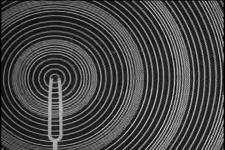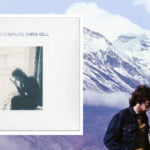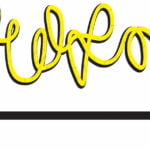It’s the time of year for saving money!
The first ten articles in this series have concentrated on really just two things; how a phono cartridge takes the wiggling of a grove in a vinyl disc and turns it into electricity, to be amplified and fed to your speakers to be turned into music, and how that same energy, either direct from the groove or amplified, can create resonances or feedback to interfere with the sound of your system.
 Part 10, last time, integrated the issues of resonance and feedback by showing that both are and involve movement, and described how feedback energy can stimulate resonances and resonance can, reciprocally, contribute to feedback. Then it went on to list four approaches that people have used for controlling unwanted motion: #1) Isolation ― keeping the vibration or feedback source and object physically separated from each other; #2) Absorption ― absorbing the vibratory or feedback energy (turning it into heat) before it can become a problem; #3) Cancellation ― canceling destructive energies with other energies that are equal and out-of-phase; and #4) Diffusion (also known as “mass loading”) – coupling the object to be protected with another object of far greater mass so that unwanted forces must move both together. This reduces the movement caused by external energies in a ratio directly proportionate to the ratio of “original” to “”total” mass to be moved, and can, if the massy object is great enough and the coupling rigid enough, reduce unwanted movement to where it is inaudible, unmeasurable and undetectable. (It’s why we “spike” speakers to the floor or put turntables or delicate electronics on granite slabs.)
Part 10, last time, integrated the issues of resonance and feedback by showing that both are and involve movement, and described how feedback energy can stimulate resonances and resonance can, reciprocally, contribute to feedback. Then it went on to list four approaches that people have used for controlling unwanted motion: #1) Isolation ― keeping the vibration or feedback source and object physically separated from each other; #2) Absorption ― absorbing the vibratory or feedback energy (turning it into heat) before it can become a problem; #3) Cancellation ― canceling destructive energies with other energies that are equal and out-of-phase; and #4) Diffusion (also known as “mass loading”) – coupling the object to be protected with another object of far greater mass so that unwanted forces must move both together. This reduces the movement caused by external energies in a ratio directly proportionate to the ratio of “original” to “”total” mass to be moved, and can, if the massy object is great enough and the coupling rigid enough, reduce unwanted movement to where it is inaudible, unmeasurable and undetectable. (It’s why we “spike” speakers to the floor or put turntables or delicate electronics on granite slabs.)
Each of these techniques has proven to be effective all by itself in the appropriate circumstances and it’s not at all unusual for them to be used in combination. One great example of this used three of the four “fixes” together, to great effect. I heard it in the home of another audio manufacturer some years ago (I haven’t asked permission to use his name, so please forgive me for not saying it) and it worked brilliantly. I promised, last time, that I would tell you about that system now, so here goes:
The manufacturer’s listening room was in a large, apparently very old, house that was unusual for California in that it had a “pier and beam” foundation and was built over a crawlspace. (California homes are more likely to be built directly on a “slab” floor). The room, itself, was of reasonable size, and had a very small room adjoining it that may once (I have no idea of what the main room’s original purpose was) have been intended to be a “walk-in” closet or some kind of storage space.
 With the speakers in the listening room (he bigger room), all of the equipment to drive them was in the smaller room, on what, as I recall, looked like ordinary, but very sturdy racks. The thing that was remarkable, though, was how the turntable was mounted: Near the center of the room , a hole, perhaps 18 to 24 inches square (I can’t be sure – I didn’t measure it) had been neatly cut into the floor and, set into it, directly on the ground and not touching the sides of the hole at any point, was a brick or possibly concrete- block (That was a long time ago, and I simply don’t remember which) “tower” that extended from the ground up to a point where a turntable set on it (as one was) could be conveniently operated by a standing person. The top of the “tower” was smoothly finished and level, and made a very attractive mounting place for the turntable, with dimensions big enough that, if it was later desired, a different and somewhat larger turntable could be used to replace the one then in operation. (Given the difficulty of cutting a bigger hole in the floor and building a bigger tower, preparing for that in advance was obviously a good idea.)
With the speakers in the listening room (he bigger room), all of the equipment to drive them was in the smaller room, on what, as I recall, looked like ordinary, but very sturdy racks. The thing that was remarkable, though, was how the turntable was mounted: Near the center of the room , a hole, perhaps 18 to 24 inches square (I can’t be sure – I didn’t measure it) had been neatly cut into the floor and, set into it, directly on the ground and not touching the sides of the hole at any point, was a brick or possibly concrete- block (That was a long time ago, and I simply don’t remember which) “tower” that extended from the ground up to a point where a turntable set on it (as one was) could be conveniently operated by a standing person. The top of the “tower” was smoothly finished and level, and made a very attractive mounting place for the turntable, with dimensions big enough that, if it was later desired, a different and somewhat larger turntable could be used to replace the one then in operation. (Given the difficulty of cutting a bigger hole in the floor and building a bigger tower, preparing for that in advance was obviously a good idea.)
The best thing about the way the turntable was mounted though, was neither its convenience nor its foresight, but the fact that it was – except, I would imagine, in the event of one of California’s famous earthquakes ― absolutely stable. No amount of volume from the speakers could ever affect it or force it into feedback, and even when I – out of simple scientific curiosity, of course – leaped up and down on the (closet) floor, applying my not inconsiderable mass to test the degree of protection afforded by the separation and tower arrangement, I couldn’t get any kind of response at all. The mechanical isolation (technique #1) of the floor from the turntable; the mass-loading (technique #4) provided by the absolutely rigid coupling of the (hugely massy, just in itself) brick or concrete-block base tower to the Earth; and the absorptive (technique #2) applies by the turntable’s own internal damped springing between the platterboard and its base (the “plinth”) were – as near as I could tell, absolutely effective in eliminating mechanical feedback. Couple that with the facts that everything other than the speakers was in a separate room, and that, by simply closing the door, additional isolation (technique #1) could be provided to further reduce the possibility of acoustic feedback, and you’ve got a near-perfect system.
I imagine that – with a completely separate room to work with ― it might even be possible to incorporate the one unused anti-feedback technique; cancellation of unwanted energies by the use of equal and out-of-phase energy. (Technique #3) I can even sort of imagine how such a thing might be implemented, but, frankly, I doubt that, with the level of protection already there, such a thing would be worth the effort. For that installation, probably not, but elsewhere, who knows?
In any case, resonance and feedback aren’t the only actual or potential problems to be dealt with. We’ve already touched-on tonearm mass as it applies to the ability to accurately track a record. Other problems also exist with the tonearm and its part in playing records. One of them that’s already been successfully addressed a number of times but not, perhaps surprisingly, adopted by even a major portion of the record-playing public is how a tonearm tracks a record…
The tonearm also has to do with how records are cut, and we’ll go into both of those subjects next time.
See you then.








